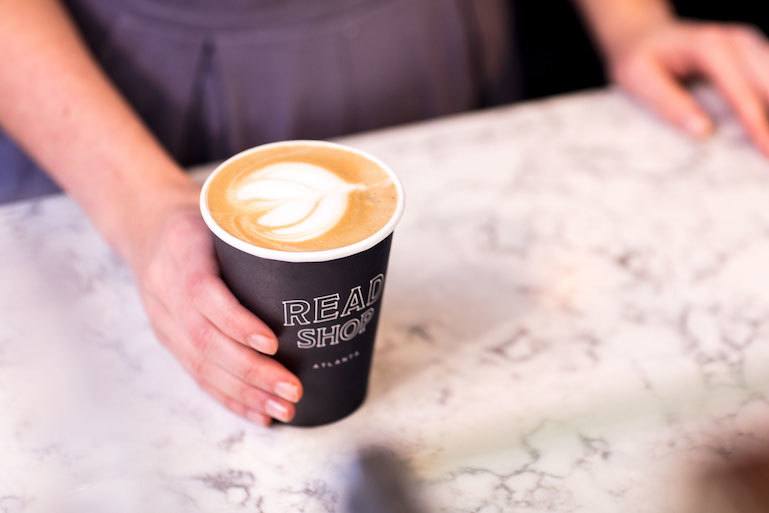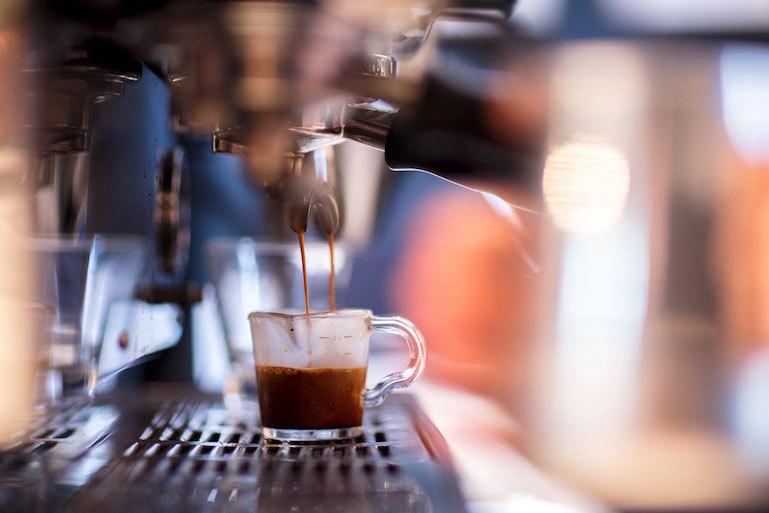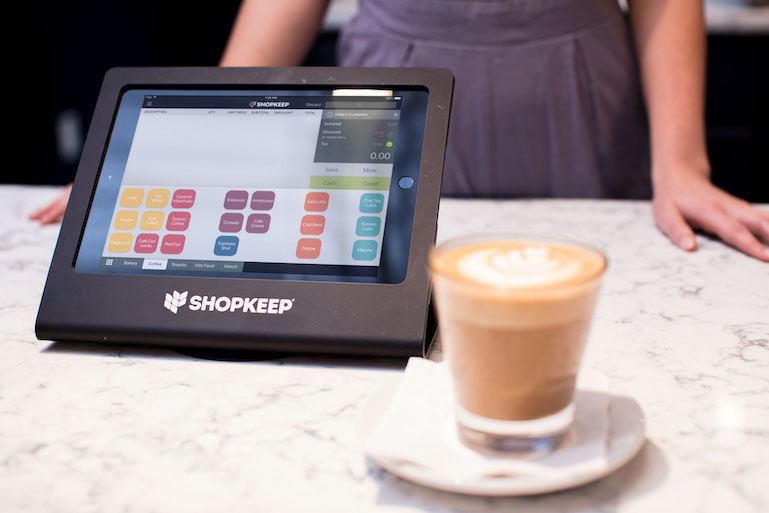
How to Operate a Coffee Shop & What You Need to Know
Congratulations on deciding to open up your own coffee shop. While it’s easy to become overwhelmed with all the different aspects of running a business, I’m here to help.
Running a coffee shop isn’t easy, especially if it’s your first attempt at entering the food and beverage business. However, just because something’s hard doesn’t mean it isn’t worth doing. It also doesn’t mean it’s impossible. With a thorough business plan, a lot of hard work, and some expert guidance, you can even the odds and give yourself a better shot at a creating a successful coffee shop business. And that’s what this post aims to give you. Keep reading for tips, tricks, and tools that will make you an informed coffee shop owner who is set up for success.
What to Consider When Opening a Coffee Shop?
You may love coffee and bringing quality customer service to the masses, but there are plenty of aspects of running a successful business to consider before you pour that first cup. A business of any kind requires a strategy and plan to move forward successfully. We recommend reviewing the following points to begin taking those first steps forward.
Location
Location is a huge factor in the success of any brick and mortar business and should be seriously considered before making any investment in property. You can have the best shop in town, but no one will know it if they can’t find you. Be sure to pick a location that is easy to find and get to. Most people aren’t going to go out of their way to visit your shop or any shop for that matter. So, make it a no-brainer for them. If possible, pick a location that’s easy to get to by car, public transit, or by foot.
Also, spend some time in the area where you’re thinking of opening your shop and get to know the community. Is it a bustling community of early risers? Is there a school, hospital, or offices nearby? These are the signs of a good location, and of people who will need all the coffee they can carry.
You should also be aware of possible competition in the area. How many coffee shops are in the immediate vicinity? Having too many of the same type of business clustered together can be bad for a new business opening up.
Interior Design
Now that people have found you on a map, you have to draw them through your doors and keep them in. The best way to encourage this behavior is by emphasizing the interior design of your coffee shop. Creating a strong visual identity is a popular way to brand yourself and stand out from competing businesses. Take the opportunity to fill your shop with connections to the community, like photos of customers, and display merchandise in creative ways to catch a customer’s attention. Use the design of your shop to reinforce your brand and cultivate the impression you want to leave in customer’s minds to attract your chosen demographic.
Interior design is also a factor in the efficiency of your business. Make sure the area behind your coffee bar is laid out in a way that lets multiple baristas work at once to maximize the number of customers served. Seating needs to be spaced out in a way that allows you to have as many chairs in your shop as possible. Just be sure that your seating arrangement doesn’t interfere with the flow of traffic in your space.
Marketing Strategy
Your location and interior design are huge parts of your marketing strategy, but there’s more to it than just that. Marketing has to do with how well you brand yourself and build connections with customers that makes them want to visit your business another time. Marketing campaigns don’t have to be expensive, and putting the right one in place will keep customers intrigued by your business.
SEE ALSO: How to Sell Gift Cards in Your Store
Your POS can handle part of this for you by helping you manage your customers. Customer management software is integrated into your POS software and allows you to manage and track history with your customers. Save their payment methods and track their spending with you and make sure customers are members of your loyalty program.
You can also sign your customers up for email alerts at checkout. Email marketing campaigns can be very effective reminders to your customers to come back. You can create incentives for customers that will make them want to come back ASAP.
Keep gift cards at your register, so customers remember to pick one up before they leave. This builds on the personal touch customers will look for when they shop with you and keep them coming back.
Drink and Food Menu
Marketing can also play a big role in your menu options. Having original and fun food and drink selections make your business unique and can be just as effective at getting your customers to remember you as a logo. Offer different ingredients to add to your drinks and food like spices, and options for various dietary needs. Customers will know that you’re the only place in town that sells a blended drink they just can’t live without and that you care about their needs so they’ll associate your coffee shop with a positive experience.
Finding and Working with Suppliers
The right kind of supplier can be with you throughout the life of your business, and that’s ideal. Customers will be looking for consistency with each visit to your coffee shop, and suppliers do influence your ability to achieve that. When choosing a supplier, pick one that wants to learn about your business and your customers. Learning about each other and proper communication is essential in any business. Suppliers and business owners who do this effectively can use the information they gather to increase profits on both sides.
Hiring and Managing Employees
Your employees are the face of your business, especially when you’re not there. Because of that, hiring the right people can make or break a business. Happy and positive employees engage well with customers, keep a business clean and orderly, all while helping customers. However, bad employees might be rude to customers, neglect keeping the store clean, and even steal. Make sure to thoroughly look through all applicants when choosing baristas and other staff to ensure their values align with your own.
All of these aspects of your business will impact a customer’s overall experience in your coffee shop and determine whether they come back. Some of these may require some trial and error, but with time and the right systems in place, you will find a set of practices that work best for you, your staff, and customers.
All of this is very important, but you will never get your business off the ground unless you have the right equipment and follow local and federal laws. There are various expenses with opening any business, but a coffee shop has some unique factors.
SEE ALSO: Top 10 Things to Get Right When Opening a Coffee Shop
What Kind of Expenses and Regulations are Associated with Coffee Shops?
Now that you now have an idea of different procedures to put in place, you have to take into account different expenses and regulations you’ll need to abide by. Of course, a coffee shop will need things like coffee makers, tables, and seating, but there may be some costs you haven’t thought of.
What Equipment is Needed?
Along with your latte artists, you’re going to need the right equipment to make it through the business day. I’m sure that when you open your coffee shop that you’re not planning on roasting each cup by hand, right? That just makes tons of extra work for you, and honestly, you won’t make money that way or meet demand. With that in mind, let’s focus on the basics that pretty much every coffee shop will need to be successful.
Coffee Makers
A coffee shop surely needs coffee makers, but not just any machine will do. You will need coffee makers, and equipment in general that can consistently make a high quantity of high-quality coffee. Also, make sure that the coffee machine you choose can produce large amounts of coffee at one time, so you don’t have to brew it throughout the day constantly. There are different kinds of coffee makers on the market that make different kinds of coffee. A french press, Moka pot, pour over, and vacuum coffee maker are all different so be sure you know the kind of coffee you’re looking to serve and what machines you need beforehand.
Espresso Machines
Drinks made with espresso, and espresso shots are popular options for many coffee drinkers so having a durable espresso machine is often a smart investment.
Coffee and Espresso Grinders
Grinding your coffee and espresso beans gives your customers the freshest cups of coffee possible.

Cooking Equipment
Your shop doesn’t have to limit their offerings to coffee. Serving food that complements your coffee and other drinks can be an asset to increase sales. Ovens, fryers, pots, pans, utensils and more are all things you will want to consider, especially if you plan on making food from scratch.
Blenders
Blenders add to the versatility of your drink menu giving your customers more options.
Storage and Shelving
You will have a lot of good coffee just sitting around in the open, going stale, without proper storage.
Refrigeration and Freezers
This can be considered another type of storage, but it’s important to differentiate from putting something on a shelf in a room and proper refrigeration.
Point of Sale (POS)
Your POS plays a role in so many different areas of your business that it’s important to take this investment seriously. A modern tablet POS simplifies and automates many of t the tedious day-to-day tasks associated with running a business coffee shop. As an owner, this means you have less busywork to worry about, freeing up more of your time on an everyday basis. Plus, the data, reports, and analytics that the POS generates are consistently updated, giving you accurate data to make informed, timely decisions about your business.
The different equipment of a coffee shop makes sure you’re as efficient as possible while meeting the demands of customers on your busiest days. You will also need to comply with the laws and regulations that govern how coffee shops operate throughout the life of your business.
SEE ALSO: The Fundamentals: Where to Buy Coffee Shop Equipment
What Are the Laws and Regulations for Food Service?
As we’ve mentioned in past blog posts, the laws that regulate food service depend on the state and locality in which your business operates. Be sure to check the Food and Drug Administration for information on food service laws organized by state. There are some permits and regulations to look at depending on what exactly you’re planning to sell. For example, in some states selling homemade goods requires a certain kind of permit and selling alcoholic items also has certain requirements. Permits and licenses for food service can be expensive. However, the amount you pay depends on the state in which you operate. Depending on the specific regulations you need to comply with, these licenses can cost from $300 to $14,000 each.
You’re also going to need to allocate space for all of your appliances, chairs and other aspects of your business. That’s where a floor plan comes in.
Why You Need a Floor Plan For Your Shop?
A floor plan is an organizational tool that you can use to make the best of the space you have in your shop. You can direct the flow of traffic easily with a floor plan that guides customers from your front door to your counter. By clearly showing your patrons where they need to go to make a purchase, you can reduce confusion, growing revenue in the process. But organizing your shop can do more than increase sales. It can help you control your inventory and protect your business from theft.
In an organized store, you always know where everything is located, and that means your inventory is better controlled. Of course, your POS will help with this, but it makes things easier if everything in your inventory has a clear and labeled space to call home even before it’s served to a customer. A floor plan helps give your inventory a structure, and in the process, makes managing it that much easier.
Strong inventory control is also one of the largest components of loss prevention. When you know that everything is where it’s supposed to be, it’s easier to notice unusual changes in your inventory. The sooner you see it, the sooner you can get to the root of the issue and act accordingly.
A POS system can manage inventory, help with loss prevention, and give you deep insights into the performance of your business. Not to mention that it also simplifies taking orders and running transactions. With that in mind, let’s take a deeper look at how a POS like ShopKeep can give you the advantage you need to run a business that’s successful in the long run.

Why Does Your Coffee Shop Need a POS?
A POS like ShopKeep gives you the tools to simplify running and growing your business day in and day out. Here are just a few of the significant ways that a point of sale system can help you be a more successful coffee shop owner.
Simplified Orders and Transactions
If there’s one thing that’s true across all coffee shops, it’s that guests love their custom orders (large, no foam, skim milk, chai latte). And nothing brings a busy cafe to a halt like trying to take these orders by hand. With a modern POS system, processing custom orders (no matter how elaborate) is as simple as tapping a few buttons, keeping your line moving and customers happy.
Employee Management
All of your staff can clock in and out of their shifts directly from the POS. Not only does this save you from needing to buy a separate time clock, but you can easily track hours for more accurate payroll. You can also monitor employee performance to see who are your top sellers, identify who’s always late, and finally figure out who is causing those suspicious changes in your inventory.
Analytics and Reporting
When you perform everyday tasks like running a transaction, creating a new customer, adding a new email address to your list, or adjusting inventory cost, your POS records it. It then converts that data into usable information in the form of reports. These reports can cover everything from sales performance to current inventory levels to profit margins per product, and much more. With these insights in-hand, you’re well-equipped to make informed business decisions that drive long-term growth for your business.
Marketing
Another big task that a POS system can help with is collecting customer information that you can later use in your marketing. With built-in customer relationship management (CRM) tools, you can create a customer record and then track purchase behavior, number of visits, and even add notes or preferences to guide future conversations. You can also easily add customers to your email marketing list (and in some cases, later sync that list to an email marketing program like MailChimp), as well as your loyalty or rewards program if you have one. When looked at together, these features give you the ability to build a personal connection with your customers that will make them want to come back.
As I opened with, starting and running a successful coffee shop is the result of the right combination of planning, hard work, and maybe even a little bit of luck. But by learning all you can about what it takes to run a successful coffee shop before you get started, you give yourself a better shot at success. I hope this post helps and gives you the info you need to feel confident about starting a coffee shop. Who knows, your first location may be the start of the next Starbucks!
Want to try ShopKeep for yourself?
Just answer a few easy questions.
Need help finding the right point of sale?
Just complete the form. We’ll call you right back to explain how ShopKeep can work for you.
Hit the ground running.Sprinting, in fact!
Read our free, comprehensive guide, Small Business 101, to learn all you need to know about starting a thriving business.

